In today’s tech-savvy world, managing Internet of Things (IoT) devices from the comfort of your couch sounds like a dream, right? Imagine sipping coffee while your smart fridge tells you it’s out of milk. Remote IoT management isn’t just a futuristic fantasy; it’s a game-changer for businesses and homes alike.
Table of Contents
ToggleOverview of Remote IoT Management
Remote IoT management involves overseeing Internet of Things devices from a distance, enhancing user convenience and operational efficiency. This technology plays a crucial role in streamlining interactions between users and their smart devices.
Definition and Importance
Remote IoT management allows users to control and monitor devices without physical presence. This capability significantly reduces response times for troubleshooting, leading to enhanced device longevity and performance. The importance of this technology lies in its ability to facilitate automation and data collection, empowering both businesses and consumers. Improved management of connected devices fosters better decision-making based on real-time data analysis. In various industries such as healthcare, agriculture, and smart home systems, the efficiency gained by adopting remote IoT management can be transformative.
Key Components
Several key components define effective remote IoT management systems. Cloud computing offers a foundational platform for data storage and processing, enabling easy access and scalability. Security protocols protect sensitive data transmitted between devices. Device management software facilitates the configuration and monitoring processes. Communication protocols establish reliable connections between devices, whether using Wi-Fi, Bluetooth, or cellular networks. Analytics tools provide insights from the data collected, helping improve operational strategies. Integrating these components ensures robust, efficient control over IoT devices, making remote management seamless and effective.
Benefits of Remote IoT Management
Remote IoT management offers significant advantages for users and organizations alike, including enhanced monitoring and cost efficiency.
Enhanced Monitoring and Control
Managers achieve better oversight with remote IoT management. Data from devices becomes readily accessible, allowing for constant monitoring of performance metrics. Alerts notify users of any anomalies or malfunctions, enabling rapid responses. Integration with cloud computing ensures that data is always current and easily retrievable. Remote access empowers users to adjust settings or troubleshoot issues without needing to be on-site. This flexibility leads to increased device uptime, improving overall systems reliability across various industries.
Cost Efficiency
Cost savings emerge through efficient resource utilization. Automated monitoring reduces the need for on-site technicians and minimizes downtime, which can be costly. Moreover, businesses can lower energy consumption with optimized device settings. Regular updates and maintenance can extend the lifespan of devices, leading to reduced replacement costs. Predictive analytics allow organizations to anticipate failures and schedule proactive interventions instead of reactive fixes, further decreasing expenditures. Overall, remote IoT management aligns operational processes with financial efficiency, making it a strategic investment for businesses.
Challenges in Remote IoT Management
Remote IoT management faces multiple challenges that can impact effectiveness and efficiency. Two prominent issues are security concerns and connectivity issues.
Security Concerns
Security concerns emerge as a critical challenge in remote IoT management. Protecting sensitive data from unauthorized access remains imperative for organizations. Many devices lack robust security measures, which exposes them to potential threats. Cyberattacks can lead to data breaches, costly damages, and compromised user trust. Encrypting data transmitted between devices and management systems helps safeguard information. Implementing regular software updates further strengthens device security. Adopting strong authentication methods, such as two-factor authentication, ensures only authorized users can access devices. Overall, addressing security vulnerabilities is essential for maintaining a trustworthy remote IoT ecosystem.
Connectivity Issues
Connectivity issues can significantly hinder remote IoT management processes. Reliable internet access is necessary for continuous communication between devices and management platforms. Intermittent connections can disrupt data flow, leading to delays and incomplete information. Many factors influence connectivity, including geographic location, network infrastructure, and environmental conditions. Utilizing advanced communication protocols improves device connectivity and enhances data transfer efficiency. Implementing failover mechanisms ensures backup connections facilitate uninterrupted operations. Fostering partnerships with robust network providers can further strengthen connectivity. Prioritizing reliable connections directly impacts the performance and operational efficiency of remote IoT systems.
Tools and Technologies for Remote IoT Management
Remote IoT management relies on a combination of software and hardware solutions to function effectively. These tools play a key role in enhancing device monitoring, optimizing performance, and ensuring security.
Software Solutions
Device management software simplifies configuration and monitoring tasks. Many platforms support remote updates, allowing users to maintain device integrity without physical presence. Cloud computing offers scalable data storage, enabling organizations to handle increasing amounts of information easily. Analytics tools also help derive valuable insights from data, supporting informed decision-making. Security protocols are crucial for protecting sensitive information. By implementing encryption, regular software updates, and strong authentication methods, entities can enhance their defenses against cyber threats.
Hardware Considerations
Selecting the right hardware is vital for ensuring successful remote IoT management. IoT devices must feature reliable connectivity options, such as Wi-Fi or cellular connections, to maintain communication with management platforms. Advanced sensors enable accurate data collection, supporting real-time monitoring. Energy-efficient devices contribute to reduced operational costs, especially in large-scale deployments. Compatibility with various communication protocols enhances the flexibility of infrastructure. Robust hardware can withstand environmental conditions, ensuring dependable performance in diverse settings. Prioritizing these hardware aspects enhances the overall effectiveness of remote IoT management systems.
Future Trends in Remote IoT Management
The evolution of remote IoT management indicates significant advancements on the horizon. Emerging technologies like artificial intelligence and machine learning are set to enhance device management and data analysis greatly.
AI and Machine Learning Integration
Automation becomes more efficient with artificial intelligence in remote IoT management. AI algorithms can analyze vast amounts of data quickly, identifying patterns that humans might miss. Machine learning enhances predictive maintenance practices, allowing systems to self-learn from historical data and optimize maintenance schedules. Furthermore, integrating these technologies improves the accuracy and speed of anomaly detection in real-time. Businesses benefit from reduced operational costs and increased device reliability due to timely interventions.
Edge Computing
Edge computing represents a key trend in remote IoT management that reduces latency significantly. Processing data near the source minimizes delays and optimizes bandwidth usage, enabling faster response times. With edge devices handling tasks locally, users access real-time insights without relying on cloud connectivity all the time. This approach also strengthens data privacy by limiting sensitive information sent to centralized servers. Organizations that adopt edge computing can enhance operational efficiencies and improve overall system resilience against connectivity disruptions.
Conclusion
Remote IoT management is reshaping how users interact with their devices. By enabling effortless monitoring and control from anywhere, it enhances convenience and operational efficiency across various sectors. The integration of advanced technologies and robust security measures is essential for overcoming challenges and maximizing the benefits of remote management.
As organizations embrace AI and edge computing, the future of remote IoT management looks promising. These innovations will not only improve automation and predictive maintenance but also ensure data privacy and reduce latency. Adopting these trends positions businesses for greater resilience and efficiency in an increasingly connected world.




